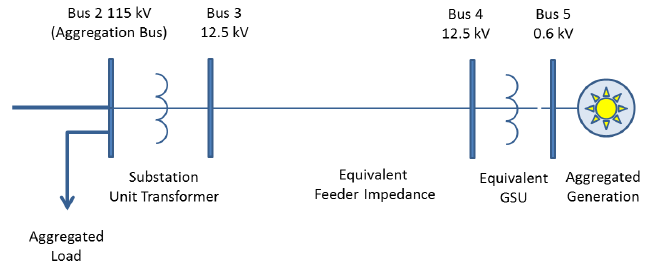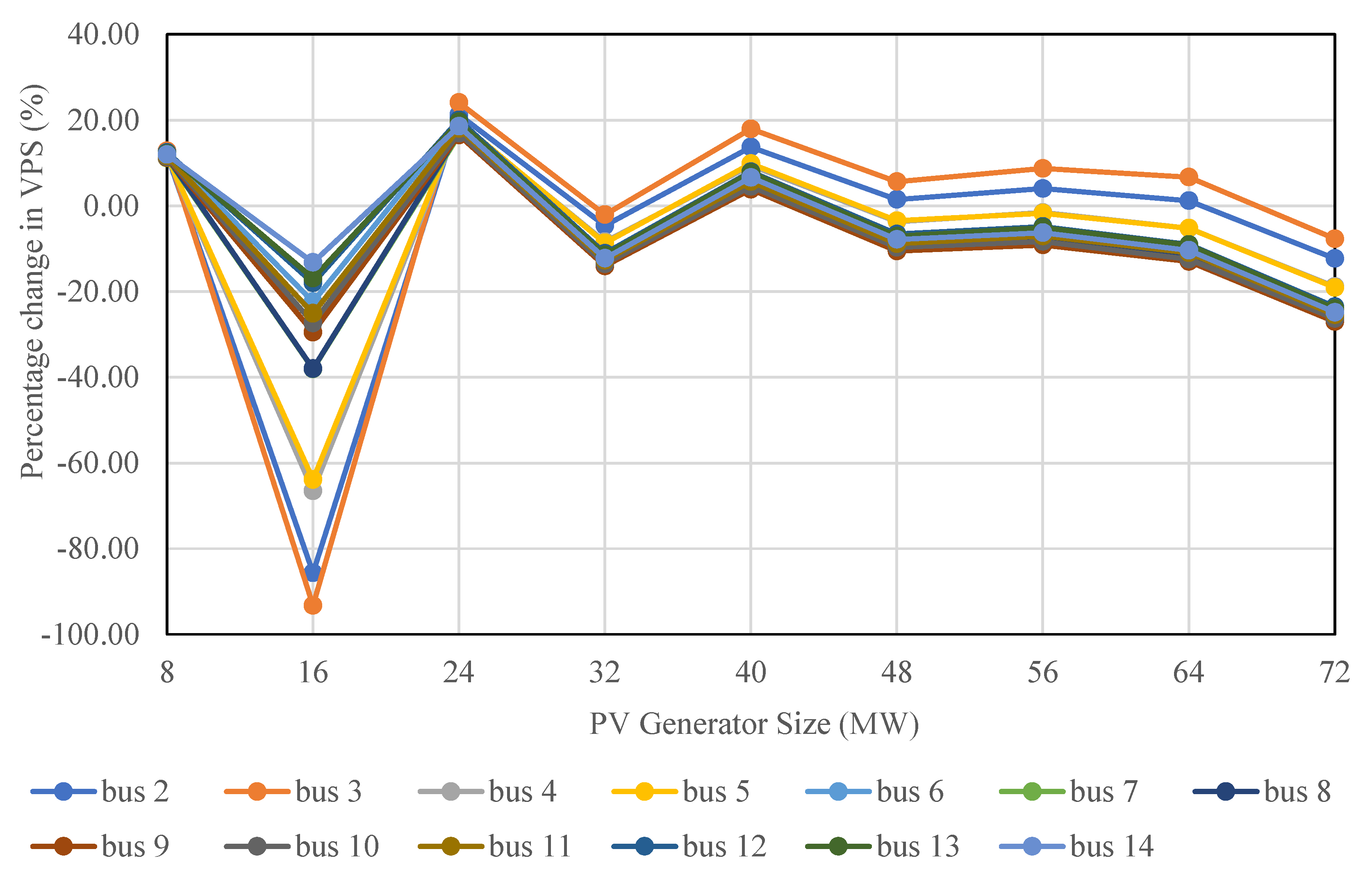

The reduced circuit maintains the feeder topology and characteristics so that it performs the same in simulation. A distribution feeder, which will typically have hundreds to thousands of line sections and nodes, can be simplified to an equivalent circuit with far fewer line sections and nodes. This paper describes an analytical approach that can be used to derive the simplified equivalent representation of the circuit. A simplified equivalent circuit will retain the general characteristics of the distribution system and will also reduce the modeling effort required. A full detailed model of the distribution system can be time consuming to produce, and a time-series simulation of a large system at a high time-resolution requires significant computational processing. Interconnection studies are required to study the impacts of high deployment levels of PV on a distribution system when the PV levels exceed screening thresholds for fast track approval. With an increasing number of Distributed Generation (DG) being connected on the distribution system, a method for simplifying the complexity of the distribution system to an equivalent representation of the feeder is advantageous for streamlining the interconnection study process. 5.2 Circuit Reduction Validation with Time-series Analysis.5 Evaluating PV Impact Using Circuit Reduction.



3.1.2 Equivalent Power with Line Losses.Validation of the method is also performed for snapshot and time-series simulations with variable load and solar energy output data to validate the equivalent performance of the reduced circuit with the interconnection of PV. The reduced feeder is simulated using PowerWorld Simulator to validate that those buses operate with the same characteristics as the original circuit. An example 15-bus feeder is shown with the parameters and intermediate example reduction steps to simplify the circuit to 4 buses. The equations and methodology are presented with mathematical proofs of the equivalence of the circuit reduction method. These buses-of-interest can be potential PV interconnection locations or buses where engineers want to verify a certain power quality. This report presents a method of simplifying feeders to only specified buses-of-interest. The general characteristics of the system can be retained while reducing the modeling effort required.


 0 kommentar(er)
0 kommentar(er)
